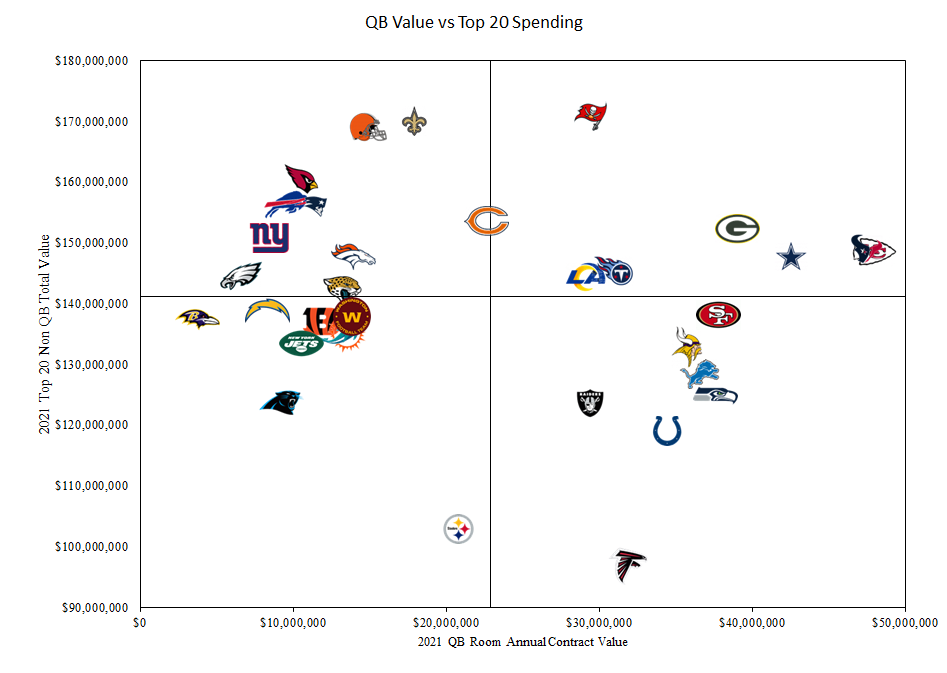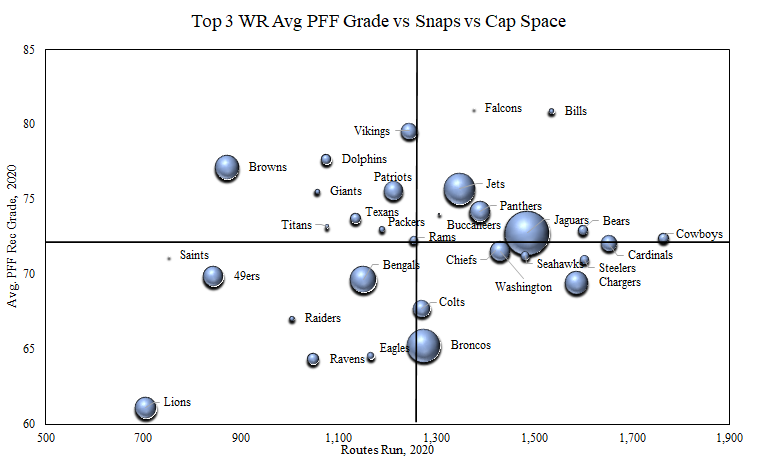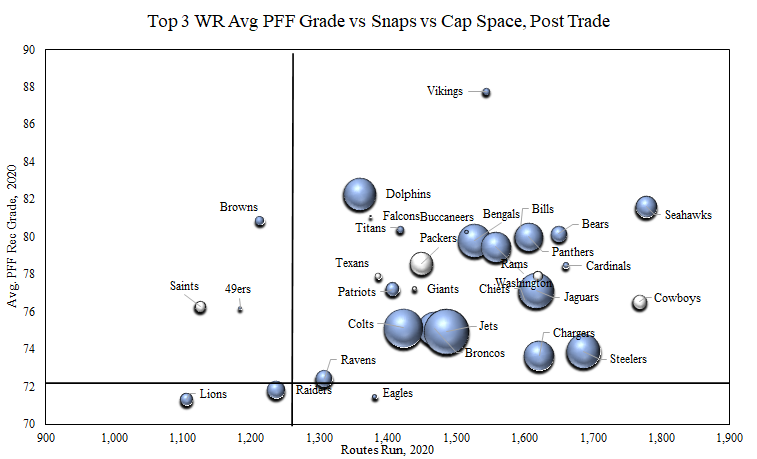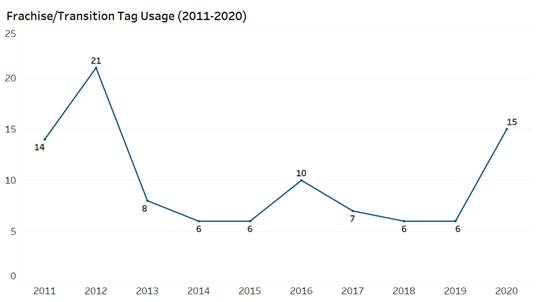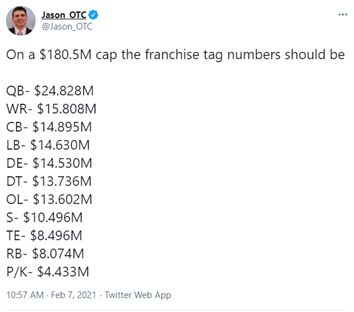The other day I looked at how teams were spending around their Quarterbacks in 2021 and I had a few people ask about how that correlates with team success, so I went back and retroactively charted each year since 2015 to get an idea as to how teams financial construction leads to wins and losses.
For each year I calculated the team’s annual spending on all QB’s on the roster and then the annual value of the top 20 non-QB’s on the roster. Each year was broken down based on the median in the NFL for that given year to classify a team as a “high” or “low” spender in that year. We then looked at the record for each team. Here was the initial breakdown.
| QB Value | Top 20 Non-QB Value | Count | Win % |
| High | High | 39 | 0.567 |
| Low | High | 57 | 0.538 |
| High | Low | 57 | 0.491 |
| Low | Low | 39 | 0.391 |
As you can see a majority of teams fall into the category where they split the investment basically deciding to go low on the roster if they have an expensive QB or high on the roster when they have a cheap QB. The results were interesting with those who spend more on the overall team performing better than those who spend below the median for that year. The teams that go low in both categories on average performed pretty poorly. These would be teams mainly with rookie QBs or third rate veterans and an “on paper” bad roster.
Here is how each group performed when breaking the win totals down a bit further.
| QB Value | Top 20 Non-QB Value | 10.5+ wins | 8 to 10 wins | 5.5 to 7 wins | 0 to 5 wins |
| High | High | 30.8% | 30.8% | 30.8% | 7.7% |
| Low | High | 31.6% | 31.6% | 19.3% | 17.5% |
| High | Low | 24.6% | 26.3% | 21.1% | 28.1% |
| Low | Low | 7.7% | 20.5% | 30.8% | 41.0% |
So much in the NFL is QB driven that these results make sense. High spending on a QB usually means the team is going to have a high floor which basically eliminates the disaster record. The teams with lower spending on the QB often fall into the rookie pool which has far more variance. The two have similar high end results but the low QB also led to plenty of disaster years. Teams not meeting the standards for the rest of the roster are certainly coming up short despite the fact that they should have a higher floor QB. The double lows really indicate that waiting to see if your rookie is any good or expecting a Nick Foles type of players to fix a mediocre team is not an optimum approach unless the goal is draft position.
Finally, I inflated the numbers for each team based on the $198.2M cap that was in place for 2020 and made a plot of the teams sorted by three record tiers. The quadrants are based on the overall averages for the six years I looked at. This does overstate and understate some teams since the market itself isn’t pegged to the cap but it made for a quick, easy chart.

There is a lot of green (10+ wins) in the right quadrant, about 50% of all teams, and not much red(under 7 wins), about 20% of all teams. The top left is about 35% green while the bottom right is around 30% green and the bottom left is only 13% green.
So are the lower spenders shot? No, but there is probably something to gain from looking at how the teams are investing in their teams before the season begins compared to the rest of the league. There is still time for those numbers to change this summer but I think I’ll circle back around in September and see how the teams are looking when it is time to actually play the games.
Today I wanted to take a look at how much talent teams are attempting to surround their QB’s with in 2021. To do that I looked at how much is being spent per year on the top 20 non quarterbacks on each roster and compared that with the total expenditure on the QB room this year. Here is a quick look at how the league breaks down.
